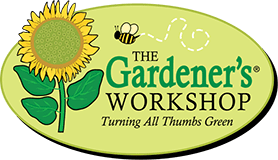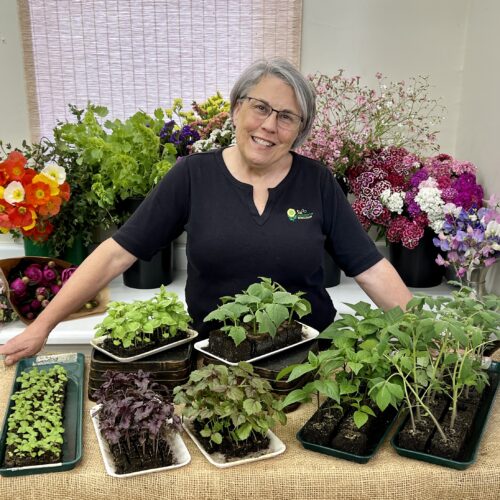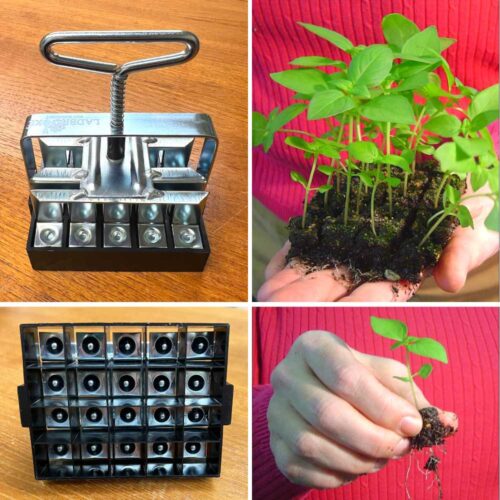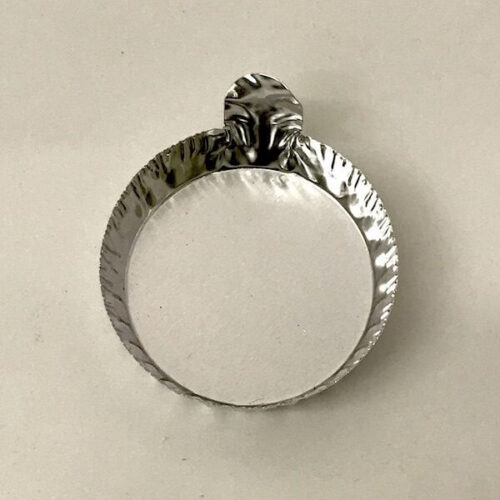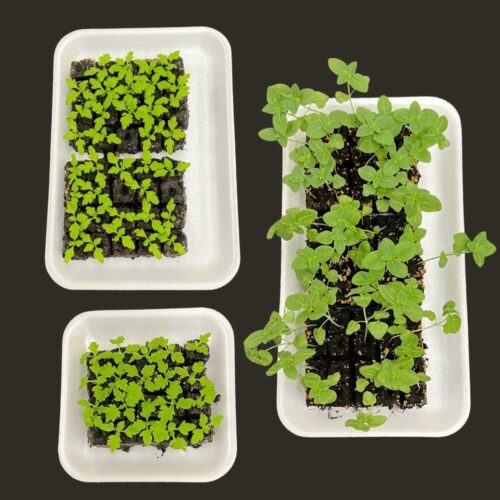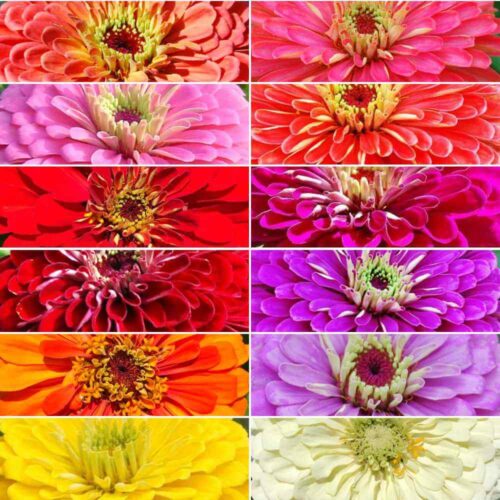Indoor Seed Starting: Set Yourself up for Success
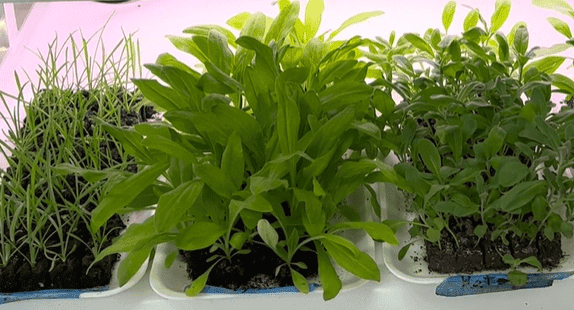
How do you start a plant from seed indoors?
Have you checked out Seed Talk? This new TGW Field & Garden podcast series hosted by Lisa along with TGW’s Seed Manager, Layne Angelo, answers the most common seed starting questions received from our customers. Whether you’re growing cut flowers for a garden or on a commercial scale, this podcast series is for you!
Until I found Lisa’s Youtube series, Seed Starting Saturdays, I failed to successfully grow any of my own transplants from seed. In 2018, our family was thinking of starting a cut flower farm on a small piece of family land. We quickly realized that successful seed starting was going to be a skill we had to master if we wanted long-term success and profitability for cut flower sales.
I’m a few seasons into flower farming now, and I’d like to share some insights into seed starting for new flower farmers from what I’ve learned so far.
Seed Starting is a skill to be learned and mastered over time. 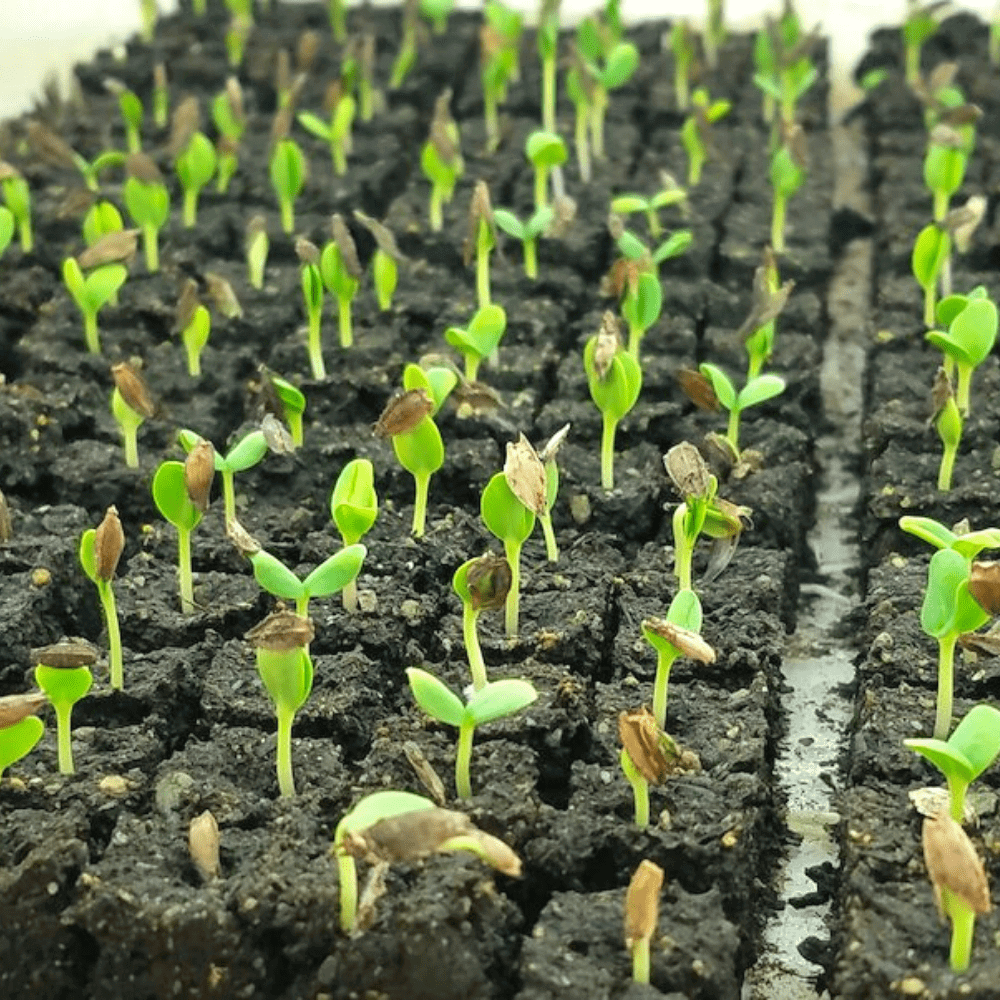
I’d like to share a saying that I learned as a knitter when I tried to scale up from simple beginner projects to more advanced ones: It’s not hard, it’s new. What this means is that you need the knowledge, time, patience, and practice to build the skills to become a successful seed starter.
How do you do this? First, you have to understand what seeds need. Look no further than Lisa’s books, Cool Flowers and Vegetables Love Flowers, and her online workshop Seed Starting Made Easy. These are the best resources to gain an understanding of seed starting and what individual seeds need. I never paid attention to any of those important details before I read her books; I had always been told to just throw a few seeds in some dirt or potting trays and put them in the window.
Avoid Overwhelm: As a beginner, start with just a few flower varieties.
All varieties of cut flower seeds have different starting dates and germination rates. This can feel overwhelming to a person brand new to seed starting. Pick 1 or 2 flowers at a time and master growing that flower from seed to transplant, focusing your attention on giving the plants what they need from start to finish.
If you’re in the season to start Cool Flowers, I suggest starting with snapdragons. If it’s warm season tender annuals you want to grow, I suggest beginning with zinnias. Why these flowers? They come in many colors, shapes, and sizes, and yet have the same seed starting needs. They are also the most profitable flowers we grow on our farm! We can sell them to everyone: florists, designers, farmers market customers, etc. We just change the colors we grow through the seasons.
Here’s the key thing: once I successfully mastered growing my own snapdragon transplants, all the pieces for starting other cool flowers immediately fell into place. By sticking with one flower to start, snapdragons, I built the key skills needed to grow a cut flower from seed to transplant. I then used that knowledge to successfully round out my Cool Flowers lineup.
It takes time to get your Growing Space Set Up for Success – start early!
As a beginning seed starter, you’re going to want to start your seeds a few weeks earlier than recommended on the package. Why? Because you’ll need that extra time to refine your skills. It can take time to establish the right conditions in your growing space, and it may require some trial and error. For example, I ended up moving my growing space around my house a few times to get the right conditions. Once I forgot to water my transplants and they died. I had to restart when seeds germinated poorly due to errors, like my not seeding them correctly, or not watering them enough, or the air temperature of the room being too hot or cold.
Seeds need energy in the form of heat and light to germinate and grow into healthy transplants. Your windows and ambient room temperatures are not enough! That’s why Lisa recommends heat mats to give the seeds the energy they need to break their seed coats and germinate. Once germinated they need 16 hours of light a day – hard to get just from windows and ambient light in your space. That’s where grow lights come in! Once I invested in these two tools, my seeds grew beautifully into healthy transplants. I made a large investment at first, but paid for my lights and heat mats with my first few florist sales of my first growing season.
Seed starting is a skill worth mastering.
It enables you to grow more varieties of cut flowers and increases your bottom line when it comes to flower farming profitability. But most of all, the magic of watching a seed grow successfully into a beautiful transplant and then grow that transplant into a gorgeous cut flower is something that I just can’t put into words. Seed starting is good for the soul.
About The Author: Anne Gettys Morgan is our Customer Service Coordinator at The Gardener’s Workshop, as well as the head grower at Franklin Flower Farm in Macon County, NC. Anne can be reached at [email protected].
